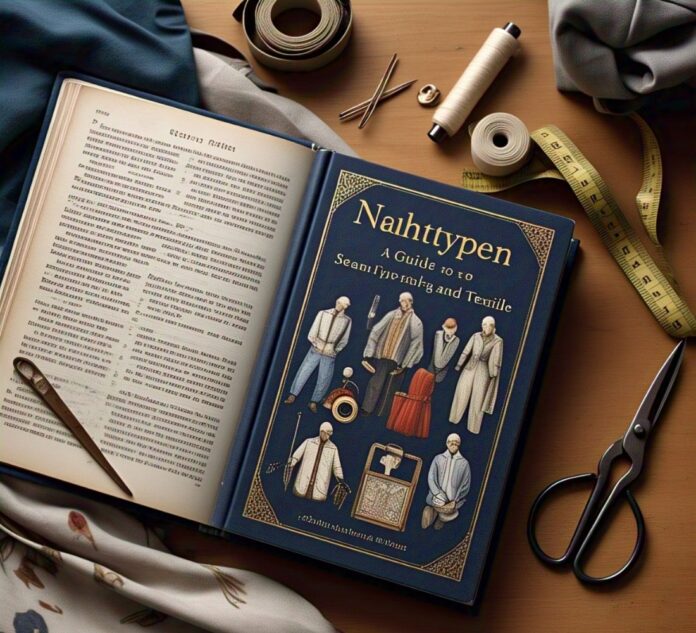In textile science and applied garment construction, the German term Nahttypen designates the distinct mechanical bonds that unite two or more fabric layers. Each joining technique is paired with a specific stitch and is influenced by both the materials on hand and the end user’s expectations of wear and appearance. Designers, industrial tailors, and textile engineers alike must familiarize themselves with these connections; a seemingly minor choice in seam style can tip the balance among looks, strength, comfort, and manufacturing efficiency.
The following discussion inventories the most frequently encountered Nahttypen, detailing characteristic appearance, performance profile, plus situational advantages and drawbacks.
What are Nahttypen?
The label translates simply as seam types, yet its use conveys a hands-on engineering mind-set common in German-language fashion studies. Each Nahttyp acts not merely as an aesthetic line but as a load-carrier that determines how a finished garment settles, stretches, or frays over time. Selection criteria invariably include the fabric weight, the silhouette drafted by the designer, and the anticipated history of cleaning or use.
French Seam
- Description: The raw edges are folded inward and stitched twice, encasing the fraying threads.
- Use Cases: Lightweight silks, sheer chiffons, and heirloom-quality garments.
- Pros: Immaculately clean finish with no exposed raw edges.
- Cons: Time-intensive and subtly adds weight to the seamline.
Flat-Felled Seam (Kappnaht)
- Description: Each fabric selvage is tucked into the opposite side and stitched flat.
- Use Cases: Heavy denim, hard-wearing sportswear, military uniforms.
- Pros: Exceptionally robust, prolongs the life of service garments.
- Cons: Construction is intricate and the seam remains inflexibly thick.
Lapped Seam (Überlappnaht)
- Description: One layer overlaps its neighbor and is secured with two rows of stitching.
- Use Cases: Oilskin workwear, expedition tents, heavy tarpaulins.
- Pros: Provides remarkable tensile strength under demanding conditions.
- Cons: The overlap creates bulk that may not lie flat against the body.
Bound Seam (Eingefasste Naht)
- Description: A strip of contrasting or matching fabric encloses the seam allowances.
- Use Cases: Decorative jackets, tailored lingerie, evening garments.
- Pros: Offers both decorative flair and protection against fraying.
- Cons: Requires extra binding material and an additional step.
Zigzag Seam (Zickzacknaht)
- Description: A back-and-forth stitch joins the layers while allowing stretch.
- Use Cases: Soft knits, elastic-woven fabrics, active apparel.
- Pros: Retains elasticity and curbs daylight fraying.
- Cons: May appear less polished than straight-stitch finishing.
Double-Stitched Seam (Doppelnaht)
- Description: A second parallel line of stitches reinforces the primary seam.
- Use Cases: Upholstery-grade canvas, denim stress points, luggage corners.
- Pros: Supplies a margin of safety against seam failure.
- Cons: Can inhibit the natural drape of lighter fabrics.
Factors Influencing Seam Choice
- Fabric Type: Delicate organza demands a more subdued stitch than rugged canvas.
- Use Environment: Gear meant for monsoon treks needs the heft of a flat-felled finish.
- Aesthetics: Designers may favor a visible overlock purely for visual texture.
Production efficiency varies significantly between seam types because some join edges faster and cost less. Every manufacturer instinctively knows that a quick win on the assembly line can pay for itself in a single shift.
Selecting the right Nahttyp inside garment-making is never merely a technical aside but a hinge on which several priorities swing. Quality control relies on the choice, because an inappropriate stitch can shred long before the first wash. Money matters too: every spared meter of thread and every shaved minute of labor show up directly on the balance sheet. Shoppers, for their part, look no farther than the collar or hem for clues about comfort and visual appeal.
Future Technologies in Seam Construction
New tools keep rolling into the seamstress toolbox. Lasers now fuse edges with a beam, creating a seam that repels water every bit as service-ably as an old-fashioned stitch. Ultrasonic rigs bond synthetic fibers by churning the material at high frequency, turning sewing rooms into minimalist science stations. Some prototypes even weave electricity right into the seam, letting a jacket blink or measure steps without an external wire.
Every Nahttypen , in the end, is a thread-based answer to a thread-based question. The appropriate join strengthens a shoulder, hides a factory cut, and quietly tells the wearer it knows what kind of life the fabric will face. Designers, students, and seasoned engineers alike sharpen their instinctive sense of seam choice; each bout of learning pays dividends on the next garment in line.
FAQ
Q1: What is the most common seam type?
A1: The plain seam is the steady workhorse, simple enough to suit almost any textile.
Q2: Are French seams stronger than plain seams?
A2: Strength is not their claim; the value lies in the tidy finish they give lightweight or sheer fabrics.
Q3: Can seam type affect garment comfort?
A3: Absolutely; a hefty join buried under an arm can irritate the skin long before anyone notices it looks bulky.
Q4: What seam is best for stretch fabric?
A4: A zigzag stitch ranks among the top choices because the interlocking pattern allows the fiber to bend and recover without snapping. Some sewists prefer a serger finish since overlocking threads hug the edge and move with the garment.
Q5: Are advanced seams like ultrasonic welding used in fashion?
A5: Ultrasound bonding remains a niche for performance gear—hydration jackets, racing suits—but runway designers are experimenting as the machinery drops in price. Hear-say alone suggests next seasons collections will feature a few welded panels right alongside the cotton and denim staples.


